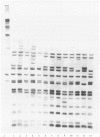Abstract
Shigella sonnei is a major agent of diarrhoeal disease in developed as well as in developing countries. Several phenotypic methods to define strain differences have been applied to this species of Shigella including, more recently, analysis of extrachromosomal and chromosomal DNA. In this study, 432 endemic and epidemic strains isolated between 1975 and 1991 in Italy, France and Switzerland were submitted to rRNA gene restriction pattern analysis, after digestion of whole-cell DNA by Hinc II, and to concomitant biotyping. Thirteen ribotypes, H1 to H13, and five biotypes, a, d, e, f, g, were detected. Ninety-five percent of the sporadic strains were assigned to ribotypes H1 to H4, which could be subtyped, except for H4, in different biotypes. Strains from each of seven different outbreaks had indistinguishable ribotype-biotype patterns. In contrast, 65 strains, isolated in Sicily in 1980 over an extended period of apparently epidemic increase of isolations and which had previously been considered to be a single bacterial clone on the basis of resistance pattern and phage type, were found to belong to two different and scarcely related ribotypes. Ribotyping and biochemical subtyping appear to be a useful epidemiological tool in studies on the circulation and distribution of strains of S. sonnei.
Full text
PDF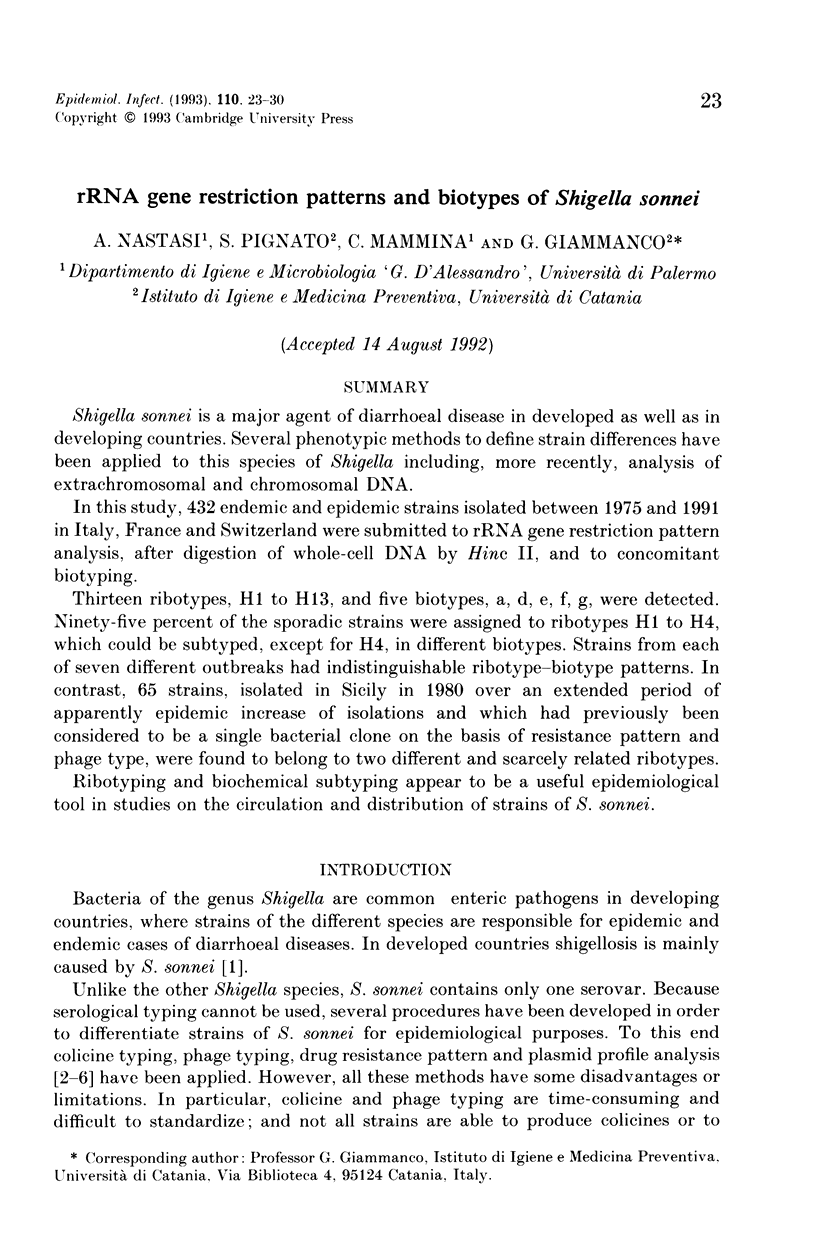

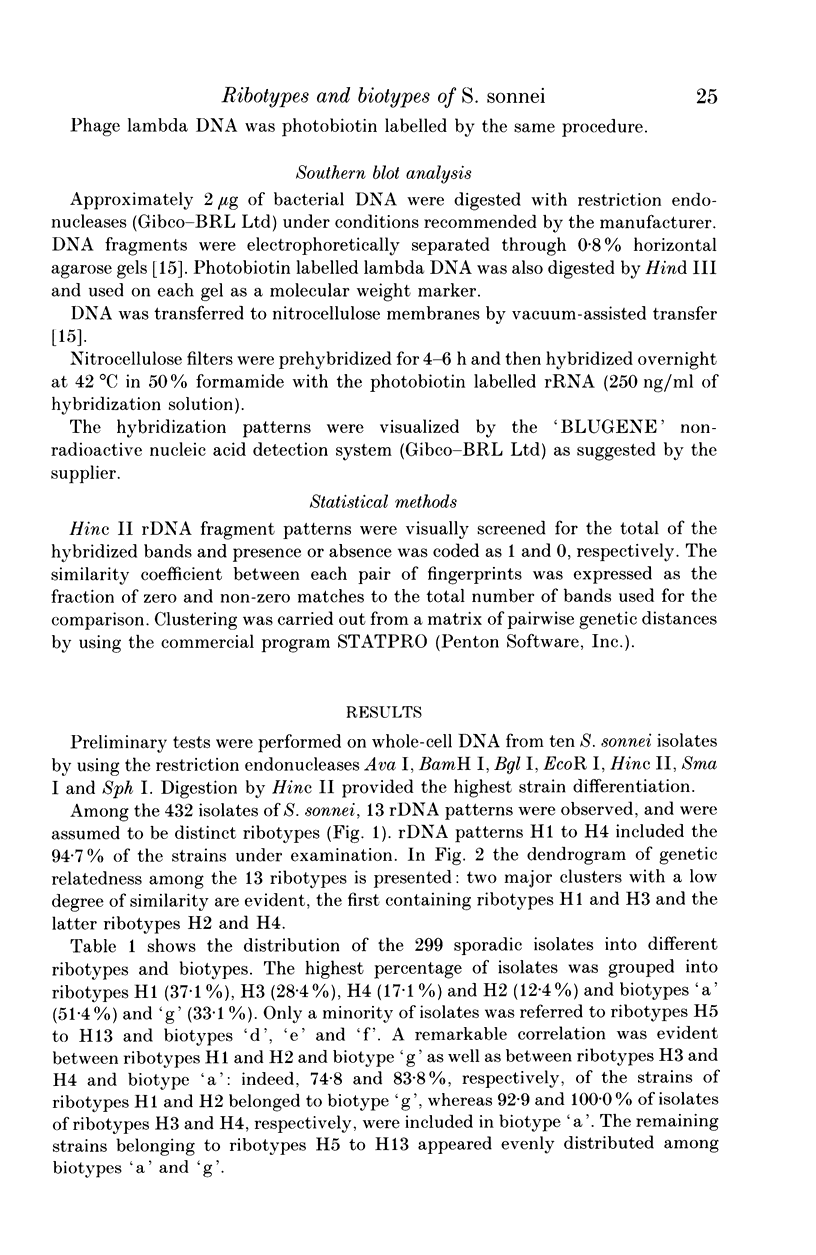


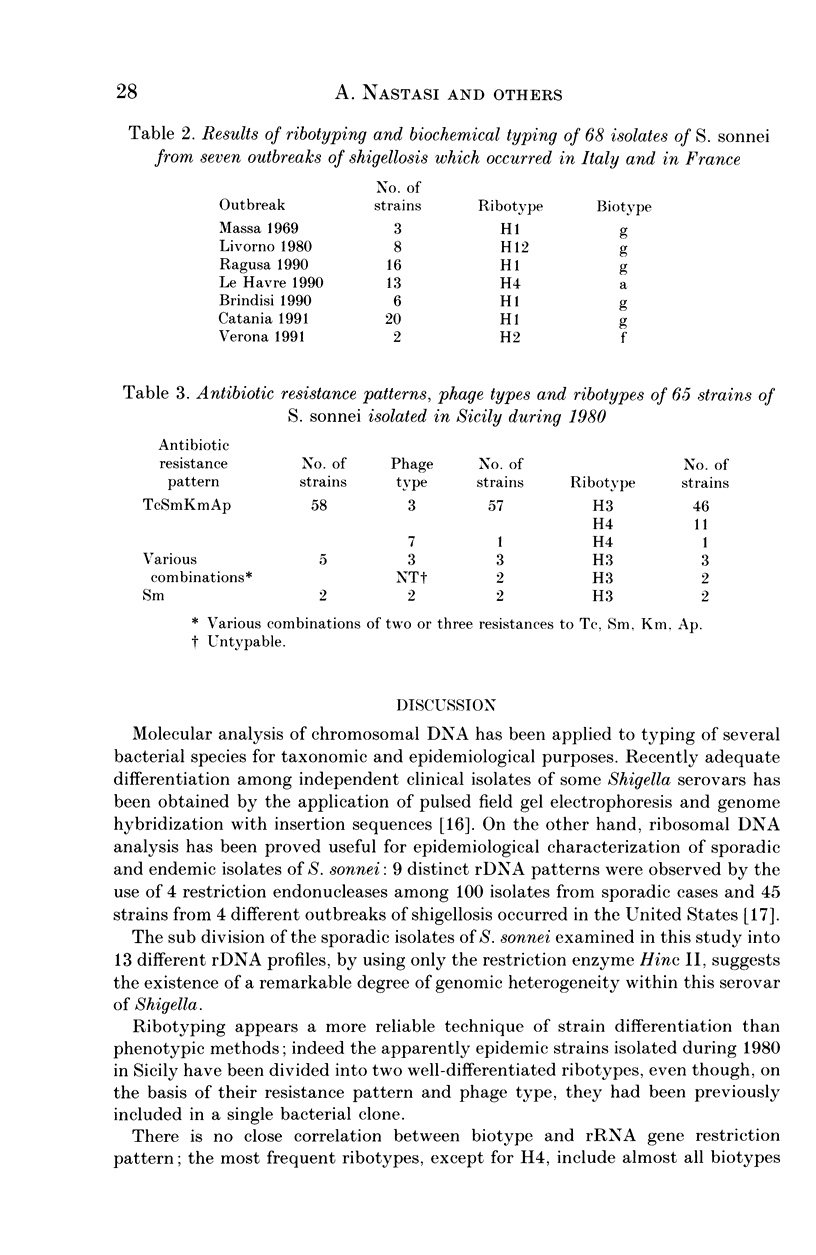

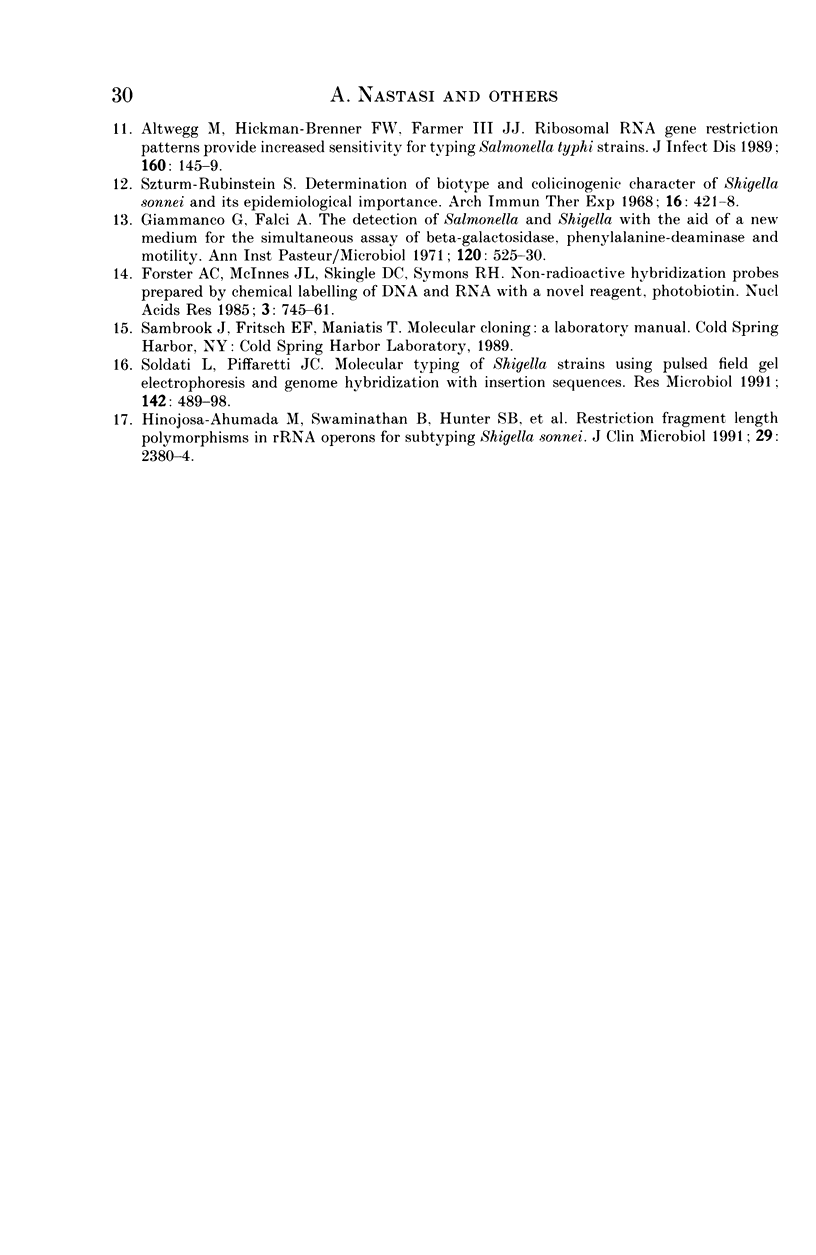
Images in this article
Selected References
These references are in PubMed. This may not be the complete list of references from this article.
- Altwegg M., Hickman-Brenner F. W., Farmer J. J., 3rd Ribosomal RNA gene restriction patterns provide increased sensitivity for typing Salmonella typhi strains. J Infect Dis. 1989 Jul;160(1):145–149. doi: 10.1093/infdis/160.1.145. [DOI] [PubMed] [Google Scholar]
- Forster A. C., McInnes J. L., Skingle D. C., Symons R. H. Non-radioactive hybridization probes prepared by the chemical labelling of DNA and RNA with a novel reagent, photobiotin. Nucleic Acids Res. 1985 Feb 11;13(3):745–761. doi: 10.1093/nar/13.3.745. [DOI] [PMC free article] [PubMed] [Google Scholar]
- Giammanco G., Falci A. The detection of Salmonella and Shigella with the aid of a new medium for the simultaneous assay of beta-galactosidase, phenylalanine-deaminase and motility. Ann Inst Pasteur (Paris) 1971 Apr;120(4):525–530. [PubMed] [Google Scholar]
- Grimont F., Grimont P. A. Ribosomal ribonucleic acid gene restriction patterns as potential taxonomic tools. Ann Inst Pasteur Microbiol. 1986 Sep-Oct;137B(2):165–175. doi: 10.1016/s0769-2609(86)80105-3. [DOI] [PubMed] [Google Scholar]
- Hinojosa-Ahumada M., Swaminathan B., Hunter S. B., Cameron D. N., Kiehlbauch J. A., Wachsmuth I. K., Strockbine N. A. Restriction fragment length polymorphisms in rRNA operons for subtyping Shigella sonnei. J Clin Microbiol. 1991 Nov;29(11):2380–2384. doi: 10.1128/jcm.29.11.2380-2384.1991. [DOI] [PMC free article] [PubMed] [Google Scholar]
- Irino K., Grimont F., Casin I., Grimont P. A. rRNA gene restriction patterns of Haemophilus influenzae biogroup aegyptius strains associated with Brazilian purpuric fever. J Clin Microbiol. 1988 Aug;26(8):1535–1538. doi: 10.1128/jcm.26.8.1535-1538.1988. [DOI] [PMC free article] [PubMed] [Google Scholar]
- Lee L. A., Shapiro C. N., Hargrett-Bean N., Tauxe R. V. Hyperendemic shigellosis in the United States: a review of surveillance data for 1967-1988. J Infect Dis. 1991 Nov;164(5):894–900. doi: 10.1093/infdis/164.5.894. [DOI] [PubMed] [Google Scholar]
- Litwin C. M., Storm A. L., Chipowsky S., Ryan K. J. Molecular epidemiology of Shigella infections: plasmid profiles, serotype correlation, and restriction endonuclease analysis. J Clin Microbiol. 1991 Jan;29(1):104–108. doi: 10.1128/jcm.29.1.104-108.1991. [DOI] [PMC free article] [PubMed] [Google Scholar]
- Marranzano M., Giammanco G., d'Hauteville H., Sansonetti P. Epidemiological markers of Shigella sonnei infections: R-plasmid fingerprinting, phage-typing and biotyping. Ann Inst Pasteur Microbiol. 1985 May-Jun;136A(3):339–345. doi: 10.1016/s0769-2609(85)80096-x. [DOI] [PubMed] [Google Scholar]
- Owen R. J., Beck A., Dayal P. A., Dawson C. Detection of genomic variation in Providencia stuartii clinical isolates by analysis of DNA restriction fragment length polymorphisms containing rRNA cistrons. J Clin Microbiol. 1988 Oct;26(10):2161–2166. doi: 10.1128/jcm.26.10.2161-2166.1988. [DOI] [PMC free article] [PubMed] [Google Scholar]
- Pruneda R. C., Farmer J. J., 3rd Bacteriophage typing of Shigella sonnei. J Clin Microbiol. 1977 Jan;5(1):66–74. doi: 10.1128/jcm.5.1.66-74.1977. [DOI] [PMC free article] [PubMed] [Google Scholar]
- Soldati L., Piffaretti J. C. Molecular typing of Shigella strains using pulsed field gel electrophoresis and genome hybridization with insertion sequences. Res Microbiol. 1991 Jun;142(5):489–498. doi: 10.1016/0923-2508(91)90182-a. [DOI] [PubMed] [Google Scholar]
- Stull T. L., LiPuma J. J., Edlind T. D. A broad-spectrum probe for molecular epidemiology of bacteria: ribosomal RNA. J Infect Dis. 1988 Feb;157(2):280–286. doi: 10.1093/infdis/157.2.280. [DOI] [PubMed] [Google Scholar]
- Szturm-Rubinsten S. Determination of biotype, phage type and colicinogenic character of Shigella sonnei, and its epidemiologic importance. Arch Immunol Ther Exp (Warsz) 1968;16(3):421–428. [PubMed] [Google Scholar]
- Tietze E., Tschäpe H., Horn G., Laue F. Clonal distribution of multiple-drug-resistant Shigella sonnei strains: identification by means of plasmid pattern analysis. Ann Microbiol (Paris) 1984 Sep-Oct;135B(2):155–164. doi: 10.1016/s0769-2609(84)80023-x. [DOI] [PubMed] [Google Scholar]
- Vlajinac H., Krajinovic S. Colicine production as an epidemiological marker for Shigella sonnei. J Hyg (Lond) 1983 Oct;91(2):273–276. doi: 10.1017/s0022172400060289. [DOI] [PMC free article] [PubMed] [Google Scholar]



